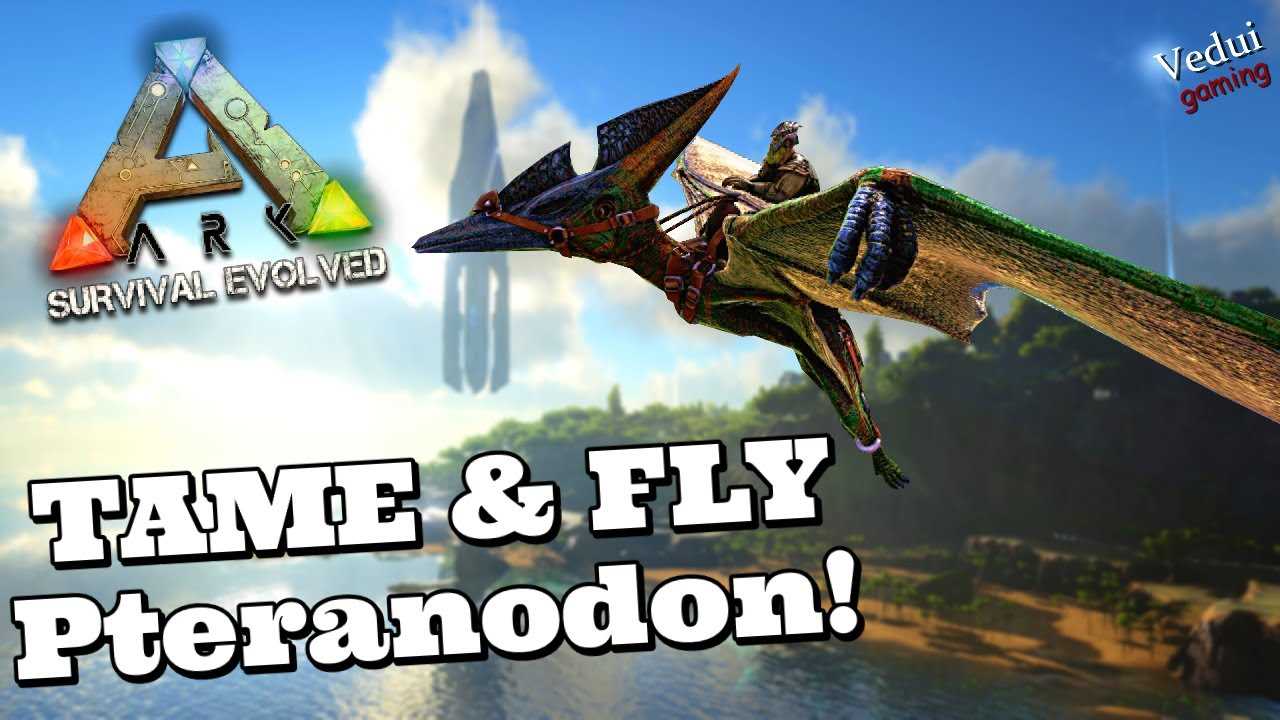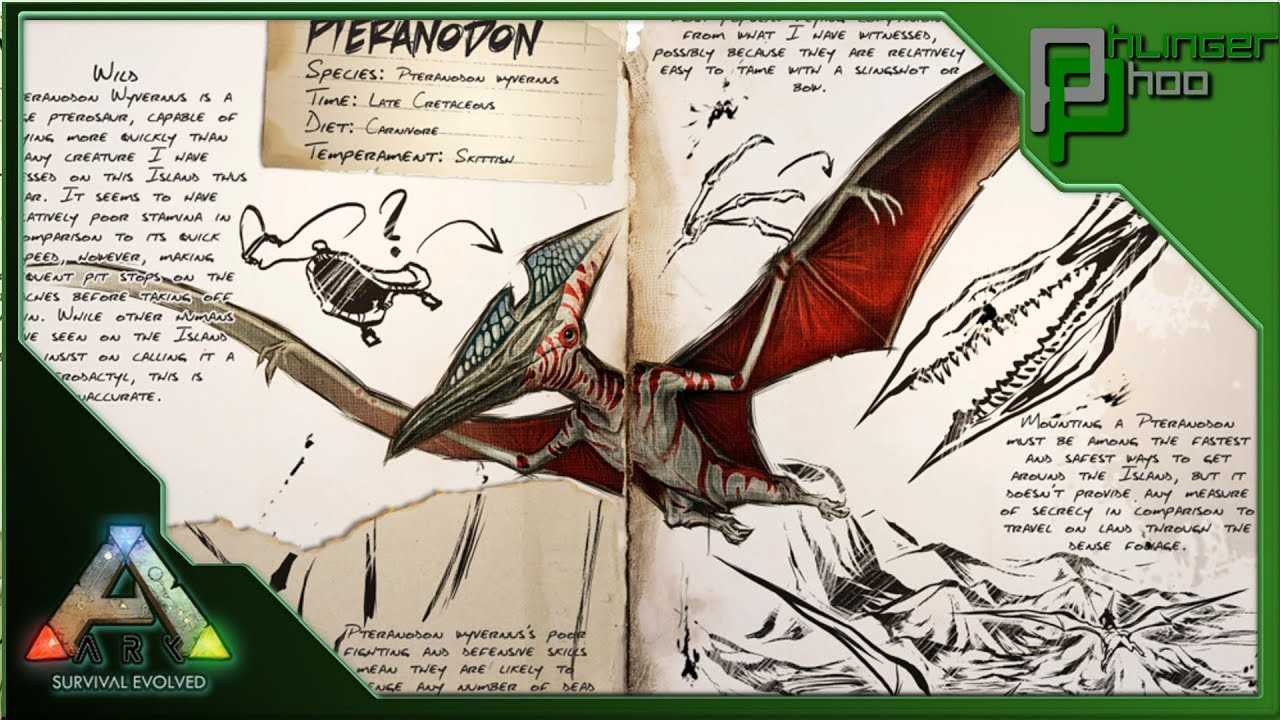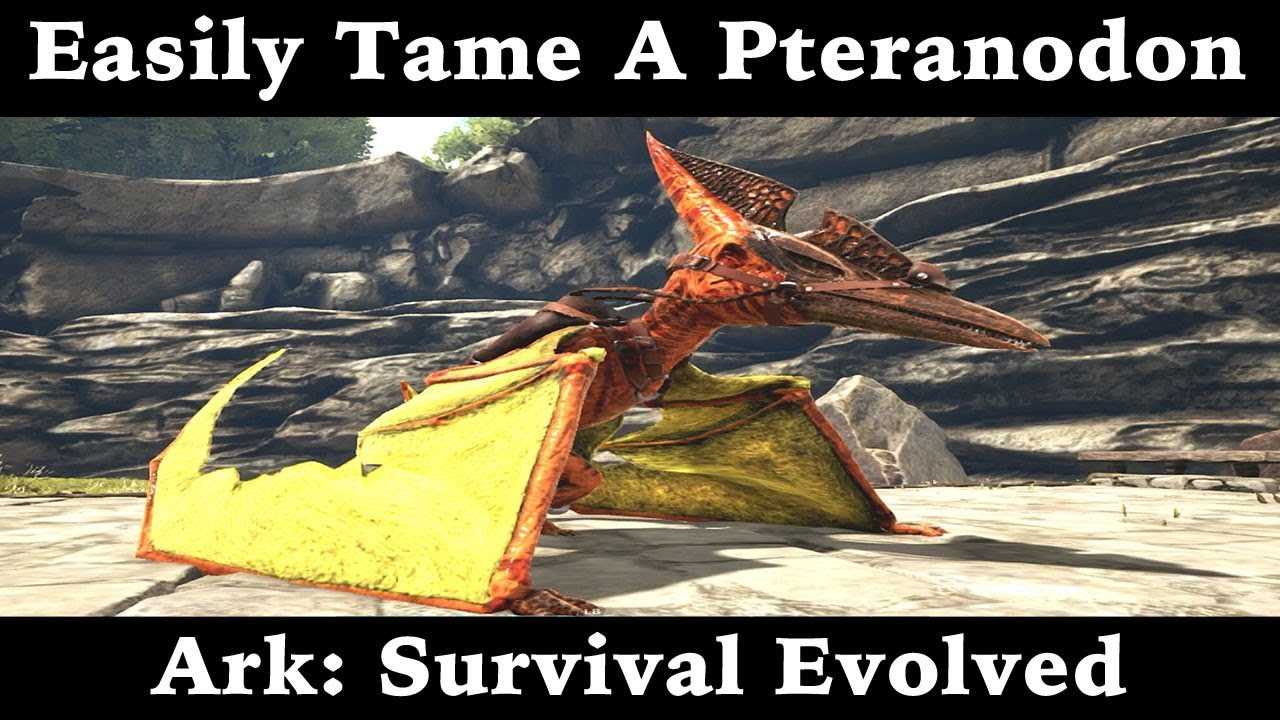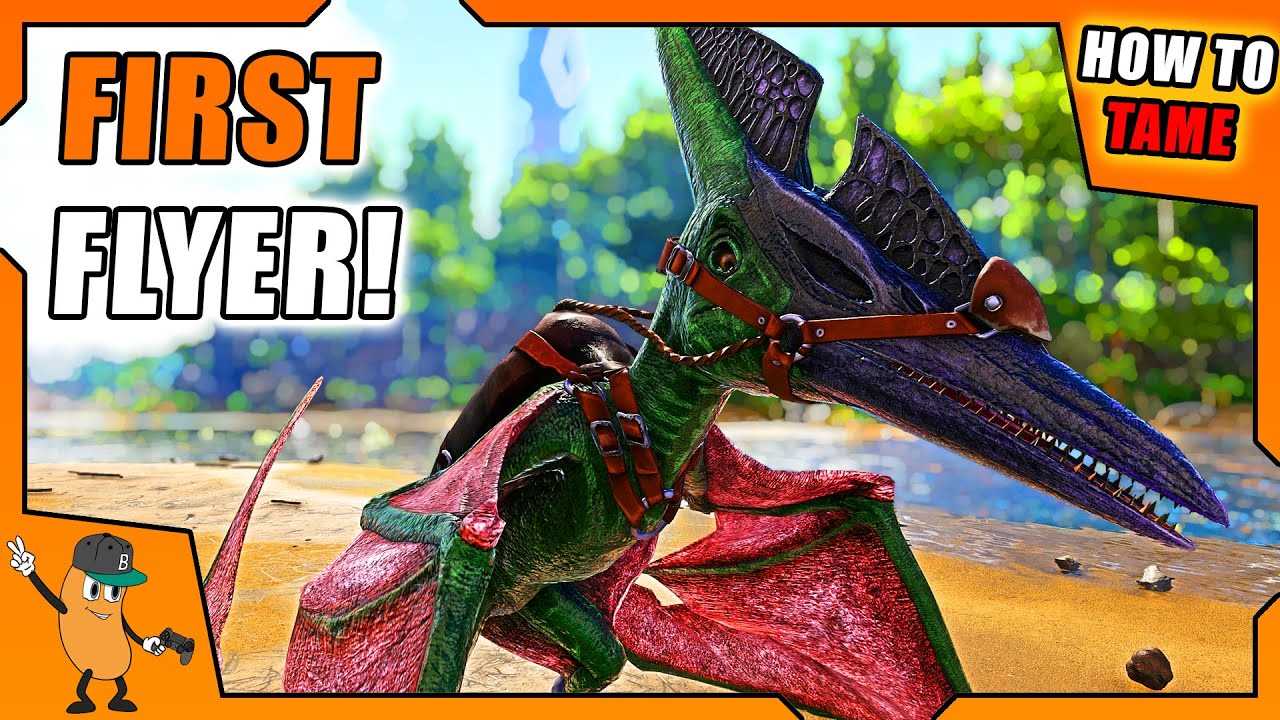
Welcome to our comprehensive guide on how to tame a pterodactyl! Taming a pterodactyl can be a thrilling and rewarding experience, but it requires careful planning and preparation. In this guide, we will walk you through the steps necessary to successfully tame and train a pterodactyl, from understanding their behavior to building a bond of trust.
Step 1: Understanding Pterodactyl Behavior
Before you embark on the journey of taming a pterodactyl, it is crucial to have a good understanding of their behavior. Pterodactyls are ancient flying reptiles that lived during the Mesozoic Era. They are known for their impressive wingspan and sharp beaks. These creatures are highly intelligent and have a strong instinct for survival.
Step 2: Building Trust
Building trust is the foundation of successfully taming a pterodactyl. Start by observing the pterodactyl from a distance and gradually approach it with caution. Avoid sudden movements or loud noises that may startle the creature. Offer it small treats, such as fresh fish or meat, to establish a positive association.
Step 3: Training and Bonding
Once you have gained the pterodactyl’s trust, it’s time to start training and bonding with your new companion. Begin by teaching basic commands, such as “come” and “stay,” using positive reinforcement techniques. Pterodactyls are highly intelligent and can quickly learn new behaviors.
Step 4: Providing Proper Care
Proper care is essential for the well-being of your tamed pterodactyl. Ensure that it has a spacious and secure enclosure with plenty of room to fly. Provide a balanced diet consisting of fresh fruits, vegetables, and protein. Regular veterinary check-ups are also crucial to monitor the pterodactyl’s health.
By following these steps and investing time and patience, you can successfully tame a pterodactyl and develop a strong bond with this magnificent creature. Remember, taming a pterodactyl is a lifelong commitment, but the rewards are immeasurable.
Section 1: Preparing for the Challenge

Taming a pterodactyl is no easy task. It requires careful planning and preparation to ensure both your safety and the well-being of the creature. In this section, we will discuss the essential steps you need to take before attempting to tame a pterodactyl.
Step 1: Research
Before embarking on this adventure, it is crucial to gather as much information as possible about pterodactyls. Learn about their behavior, habitat, and dietary needs. Understanding their natural instincts will help you establish a bond with the creature.
Step 2: Building Trust
Building trust is a fundamental aspect of taming any wild animal, and pterodactyls are no exception. Start by spending time near their habitat without making any sudden movements or loud noises. Gradually, the pterodactyl will become accustomed to your presence and begin to trust you.
Step 3: Establishing Boundaries
Pterodactyls are powerful creatures with sharp beaks and claws. It is essential to establish boundaries to ensure your safety during the taming process. Use physical barriers or training techniques to create a safe space for both you and the pterodactyl.
Step 4: Training Techniques
Developing a set of training techniques is crucial for successfully taming a pterodactyl. Use positive reinforcement methods, such as rewards and praise, to encourage desired behaviors. Patience and consistency are key during this process.
Step 5: Equipment and Supplies
Before attempting to tame a pterodactyl, gather the necessary equipment and supplies. This may include protective gear, such as gloves and goggles, as well as food and water for the creature. Being well-prepared will ensure a smoother taming process.
By following these steps and adequately preparing for the challenge, you will be on your way to successfully taming a pterodactyl. Remember, patience and respect for the creature’s natural instincts are essential throughout the process.
Understanding Pterodactyl Behavior

When it comes to taming a pterodactyl, it is crucial to have a deep understanding of their behavior. Pterodactyls were flying reptiles that lived during the Mesozoic Era, and they had unique characteristics that set them apart from other creatures of their time.
One of the first things to understand is how pterodactyls communicate. They used a combination of vocalizations and body language to convey their intentions and emotions. By paying close attention to their calls and movements, you can begin to decipher their messages and respond accordingly.
Another important aspect of pterodactyl behavior is their feeding habits. Pterodactyls were carnivorous creatures that primarily fed on fish and small animals. They had sharp beaks and teeth that allowed them to catch and tear apart their prey. Understanding their feeding patterns can help you provide the right type of food and ensure their nutritional needs are met.
Furthermore, pterodactyls were highly territorial creatures. They would fiercely defend their nesting sites and hunting grounds from intruders. It is essential to establish trust and respect with a pterodactyl before attempting to tame it. Building a bond based on mutual understanding and cooperation will increase your chances of successfully taming a pterodactyl.
Lastly, pterodactyls were social animals that lived in colonies. They would often gather in large groups for mating, hunting, and protection. Understanding their social dynamics can help you create an environment that mimics their natural habitat and allows them to feel comfortable and secure.
In conclusion, understanding pterodactyl behavior is key to successfully taming one of these magnificent creatures. By observing their communication, feeding habits, territorial instincts, and social dynamics, you can establish a strong bond and create an environment where a pterodactyl can thrive.
Gathering the Necessary Equipment

In order to tame a pterodactyl, you will need to gather the necessary equipment. Taming such a magnificent creature requires careful preparation and the right tools.
Capture Net: A sturdy capture net is essential for safely trapping the pterodactyl. Make sure it is made of strong material that can withstand the powerful wings and beak of the creature.
Tranquilizer Darts: Tranquilizer darts are crucial for sedating the pterodactyl during the taming process. These darts should be filled with a potent tranquilizer that will temporarily immobilize the creature without causing harm.
Leather Gloves: Thick leather gloves are necessary to protect your hands from the sharp claws and beak of the pterodactyl. Make sure the gloves fit well and allow for dexterity while handling the creature.
Taming Harness: A specially designed taming harness is needed to safely restrain the pterodactyl once it has been captured. The harness should be adjustable and made of strong, durable material to prevent the creature from escaping.
Food and Water: Pterodactyls require a specific diet to stay healthy and cooperative during the taming process. Gather a variety of fresh meats, fruits, and vegetables to provide a balanced diet for your new companion. Additionally, make sure to have a sufficient supply of clean water available at all times.
First Aid Kit: Accidents can happen during the taming process, so it is important to have a well-stocked first aid kit on hand. Include bandages, antiseptic ointment, and any necessary medications for both yourself and the pterodactyl.
By gathering these necessary equipment, you will be well-prepared to tame a pterodactyl and begin a rewarding journey with your new prehistoric friend.
Creating a Safe Training Environment

When it comes to taming a pterodactyl, creating a safe training environment is crucial. These prehistoric creatures can be unpredictable and potentially dangerous, so it’s important to take the necessary precautions.
First and foremost, make sure you have a secure and spacious area for training. Pterodactyls need room to spread their wings and fly, so a large open space is ideal. Ensure that the area is free from any potential hazards such as sharp objects or obstacles that could injure the pterodactyl or impede its movement.
Next, it’s important to establish clear boundaries and barriers. Use fencing or netting to create a designated training area where the pterodactyl can safely practice flying and landing. This will not only protect the pterodactyl from wandering off or getting lost, but it will also prevent any unwanted interactions with other animals or humans.
Additionally, provide plenty of perches and resting spots within the training area. Pterodactyls need places to rest and observe their surroundings, so having various elevated platforms or trees will help them feel more comfortable and secure.
Lastly, always have safety equipment on hand. This includes gloves, helmets, and any other protective gear that may be necessary during the training process. It’s better to be prepared and have these items readily available in case of any unexpected situations.
By creating a safe training environment, you can ensure that both you and the pterodactyl are protected during the taming process. Remember, patience and consistency are key when it comes to taming these magnificent creatures.
Section 2: Building a Bond

To tame a pterodactyl, it is crucial to understand how to build a strong bond with this ancient creature. Building a bond with a pterodactyl requires patience, trust, and a deep understanding of their behavior and needs.
Firstly, it is important to establish trust with the pterodactyl. Approach it slowly and calmly, avoiding sudden movements or loud noises that may startle or frighten it. Speak softly and reassuringly to let the pterodactyl know that you mean no harm.
Secondly, spend time near the pterodactyl’s habitat to familiarize yourself with its natural environment. Observe its behavior from a distance, taking note of its feeding patterns, social interactions, and flight patterns. This will help you understand the pterodactyl’s needs and preferences.
Next, offer the pterodactyl small amounts of food to establish a positive association. Start with its favorite treats, such as fresh fish or small mammals, and gradually introduce other foods into its diet. This will help the pterodactyl associate you with positive experiences and create a bond based on trust and mutual benefit.
Additionally, spend time with the pterodactyl on a regular basis. This can include sitting near its habitat, engaging in gentle play, or simply observing its behavior. Consistency is key in building a bond, as it allows the pterodactyl to become familiar with your presence and develop a sense of comfort and security.
Lastly, be patient and understanding. Taming a pterodactyl takes time and effort, and setbacks may occur along the way. Stay calm and persistent, and remember that building a bond is a gradual process that requires respect and empathy for the pterodactyl’s natural instincts and behaviors.
By following these steps and investing time and effort, you can build a strong bond with a pterodactyl and create a relationship based on trust, respect, and mutual understanding.
Establishing Trust through Positive Reinforcement

When it comes to taming a pterodactyl, establishing trust is crucial. These ancient creatures can be quite intimidating, but with the right approach, you can build a strong bond with them. One effective method to gain their trust is through positive reinforcement.
Positive reinforcement involves rewarding desired behaviors to encourage their repetition. This technique works well with pterodactyls as it helps them associate certain actions with positive outcomes. By using positive reinforcement, you can create a safe and enjoyable environment for both you and your pterodactyl.
Start by identifying the behaviors you want to encourage in your pterodactyl. This could include following commands, staying calm in certain situations, or even allowing physical contact. Once you have identified these behaviors, you can begin the training process.
When your pterodactyl exhibits the desired behavior, immediately reward them with something they enjoy. This could be a favorite treat, a gentle pat on the back, or even verbal praise. The key is to make the reward meaningful to the pterodactyl and to provide it immediately after the desired behavior occurs.
It’s important to be consistent with your rewards and to only reward the behaviors you want to reinforce. This will help your pterodactyl understand what is expected of them and what actions lead to positive outcomes. Consistency is key in building trust and establishing a strong bond with your pterodactyl.
Remember to be patient and understanding throughout the training process. Taming a pterodactyl takes time and effort, but with positive reinforcement, you can create a harmonious relationship based on trust and mutual respect. By rewarding your pterodactyl for their good behavior, you are not only teaching them how to behave, but also showing them that you are a reliable and caring companion.
In conclusion, positive reinforcement is a powerful tool in taming a pterodactyl. By using this technique, you can establish trust and build a strong bond with your prehistoric friend. Remember to be consistent, patient, and understanding, and soon enough, you will have a well-behaved and loyal pterodactyl by your side.
Developing Effective Communication Techniques

Communication is a crucial aspect when it comes to taming a pterodactyl. It is important to understand how to effectively communicate with these ancient creatures in order to establish trust and build a strong bond.
Here are some key techniques on how to develop effective communication skills:
1. Active Listening: Listening attentively to the pterodactyl’s vocalizations and body language is essential. By paying close attention, you can understand their needs, emotions, and intentions.
2. Non-Verbal Communication: Pterodactyls rely heavily on non-verbal cues, such as wing movements and eye contact, to convey messages. Learning to interpret and respond to these cues is crucial in establishing a connection.
3. Patience and Empathy: Taming a pterodactyl requires patience and empathy. Understanding their perspective and emotions can help you communicate in a way that is respectful and effective.
4. Consistency: Pterodactyls respond well to consistent communication. Establishing a routine and using consistent cues and commands can help them understand your expectations and instructions.
5. Positive Reinforcement: Rewarding desired behaviors with praise or treats can reinforce positive communication and encourage the pterodactyl to continue behaving in a desired manner.
6. Clear and Simple Language: Pterodactyls may not understand complex language or commands. Using clear and simple language can help them understand what you want them to do.
7. Building Trust: Trust is the foundation of effective communication. By consistently demonstrating care, respect, and understanding, you can build trust with the pterodactyl and create a strong bond.
By implementing these techniques, you can develop effective communication skills and successfully tame a pterodactyl.

